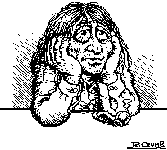|

The
present north façade of the former collegiate abbey of St. Mary
Madeleine of Châteaudun is totally devoid of any significant figurative
sculpture:
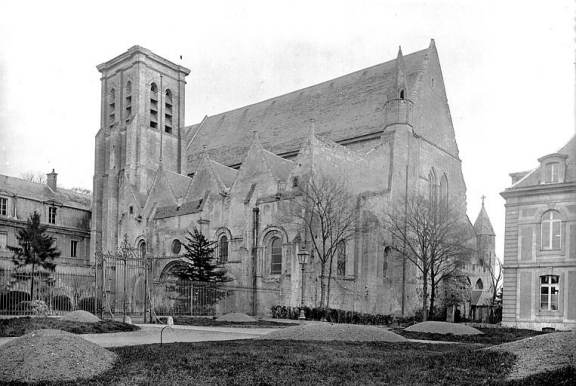
However,
it seems that this was not always the case.
Engravings made for the academician Antoine Lancelot during an extended
visit to the town which he made in 1733 (and subsequently published
by the Academie des Inscriptions et Belles Lettres in 1738) depict
an extraordinary display which has sculptures spread across nearly the
whole façade: on the wall surfaces, in the spandrals of the arch
of the central portal, and even on the outer faces of each of the five
butresses:
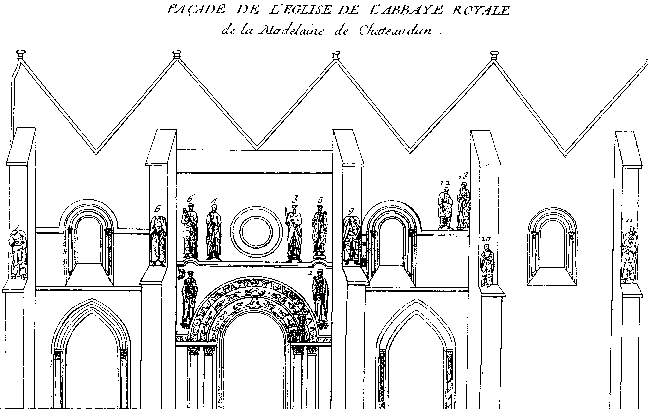
(click on the
image for a larger one)
Indeed,
this 1738 engraving, made after (since lost) drawings made for Lancelot,
suggests that we are in the presence here of at what was once (given
the surface area covered) by far the largest sculpural program in the
whole of the Chartrain region.
Although
the numerous figures we see are spread across the whole façade,
there appears to have been a special concentration of them around the
central portal, which projected outwards slightly from the main plane
of the façade, framed by buttresses on either side:
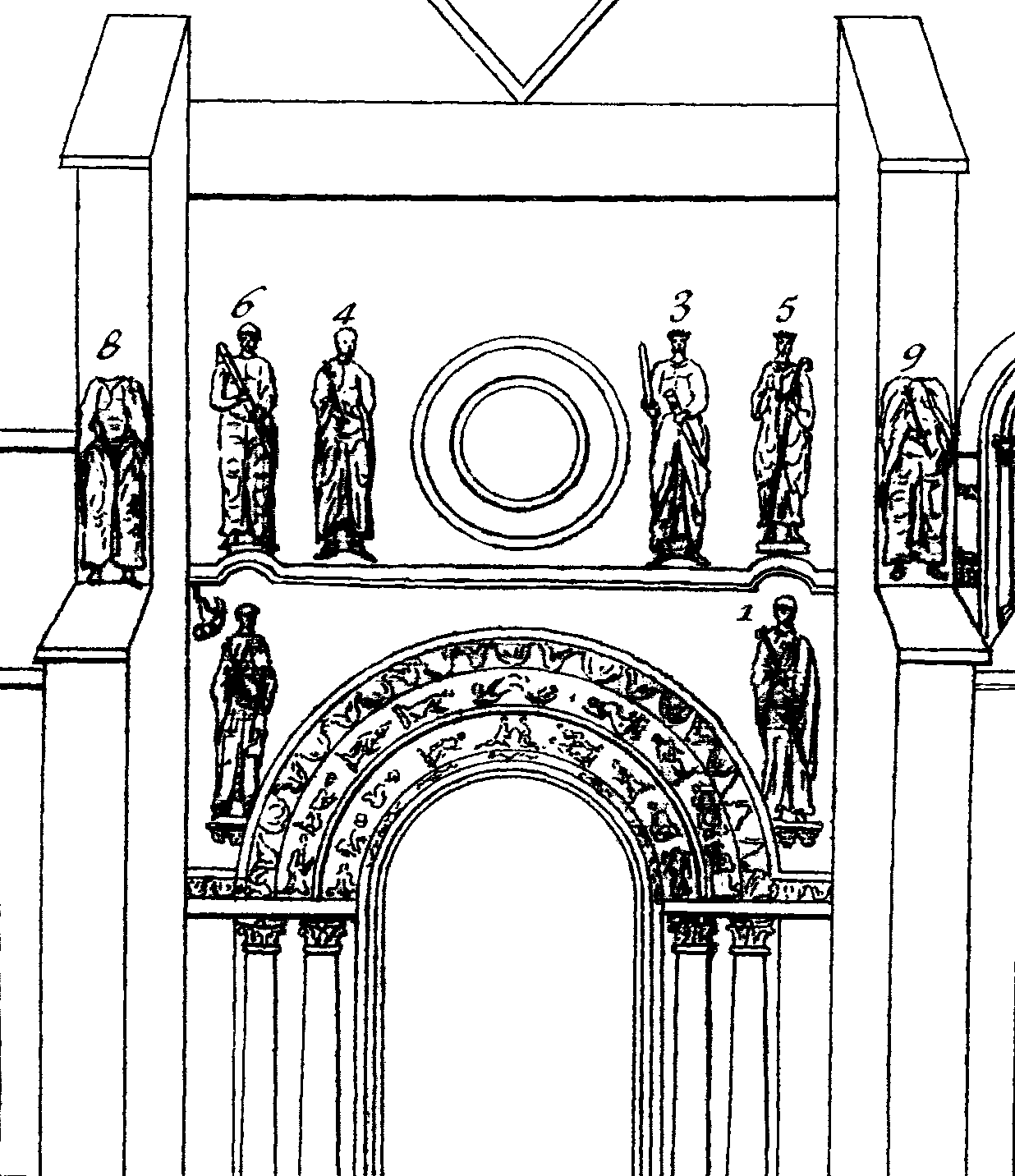
(click on the image for a larger one)
Though
it apears that this portal was without a tympanum, it was decorated
with three ranks of sculpted archivolts, the outermost ornamental or
foliate, the inner two containing figures, visible to some extent in
Lancelot's engravings, though not in sufficent detail to allow for any
iconographic (much less stylistic) identification:

(click on the image for a larger one)
However,
though now nealry completly effaced, these figures were legible to Lancelot,
who characterised them as being part of a Last Judgement iconographic
program, with the Saved souls on the right, the Damned on the left.
Iconographically,
and perhaps formally, this portal would seem to be similar to two others
in the region —a lost one which was once on the cathedral of Orléans

and one which
survives (albeit in a much "restored" 19th century form) on
the parish church of St. Basile of Ètampes:
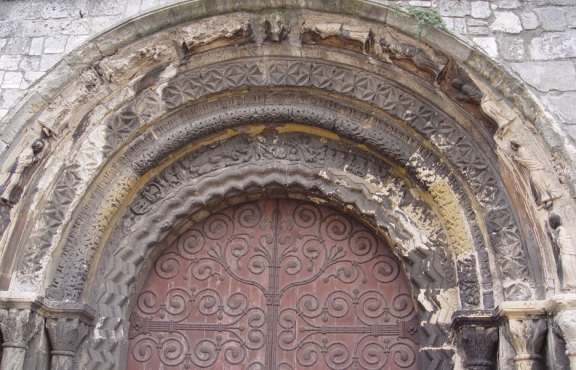
(This photograph,
taken in 2005, shows the considerable deterioration of the stone —which
was restored in the mid-19th century— since the time of the photograph
below, circa 1900:)
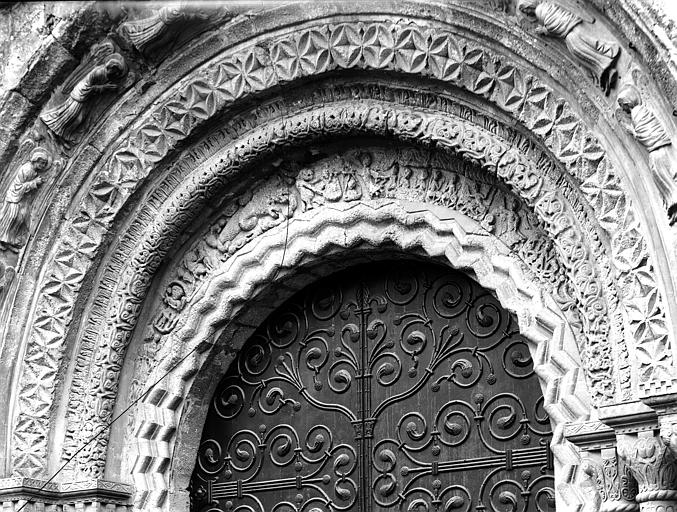
The portals
of Orléans and Étampes, both clearly conceived without
a tympanum, also seem to have had the very curious feature of an "expanded"
inner archivolt, which formed a sort of mini-tympanum. At Ètampes
(and, perhaps, at Orléans) this element contained a scene depicting
the Weighing of Souls.
Lancelot had
come to Châteaudun in the first place because it was thought by
the canons of the church in his time that their institution had been
founded by Charlemagne and, as a consequence, he was interested primarily
in the iconography of the scuptures of the façade, which seems
to depict figures from the legendary history of that renowned King and
Emperor (e.g., it was supposed that we can see the olifant of Roland
over the right shoulder of the figure in the left spandral of the portal).
In addition to
the iconographic details which we can easily discern in them, the drawings
which Lancelot had made of the larger figures were quite detailed, and
were clearly executed by a very competent artist who was able to reproduce
with considerable accuracy the quite curious forms of the drapery patterns
visible on the larger figures, which were in a style which was totally
alien to not only his own time, but also to that of the mainstream of
surviving medieval ("romanesque") sculptures as well. No 18th
century artist could have made up these bizarre patterns himself; we
must, therefore, assume that they (more or less) accurately reflect
what was visible before his eyes.
Although
Lancelot's interpretation of the iconography of the figures (which range
in height from "4 pieds 5 pouces" to "7 pieds 6 pouces")
figures on the rest of the façade is, perhaps, questionable,
the basic elements of the style of these lost sculptures is legible
clearly enough in these carefully executed drawings/engravings. Indeed,
a second, detailed plate in his publication is entirely devoted to these
larger sculptures alone, and in these we can clearly see that this style
is both reliably represented (within the state of survival at the time)
and quite curious.
Some of the figures show a complex, but quite "muddled"
articulation of the drapery (especially figure 1 here), which may be
due to the state of preservation of the sculptures, making their fold
patterns illegible :

In others
we can see an equally complex, although perhaps more coherent, articulation
of the drapery. In particular, we can see patterns of folds on the legs
which imminate from the knees in concentric patterns (most clearly seen
in nos. 6 and 8) :
 
In addition
to these coherent patterns on the legs, some of the figures have mantles
or cloaks over their shoulders which extend down to the elbows and cover
the pecterals, from one or both sides :


These mantles are particularly clear
on Lancelot's figure 7, where we can see a complex articulation of the
folds and the presence of a wide, bordered hem. All these features strongly
recall what we can see on the column figures in the "Étampes
style" on the portals of both Étampes and Chartres:
|


![]()
![]()

